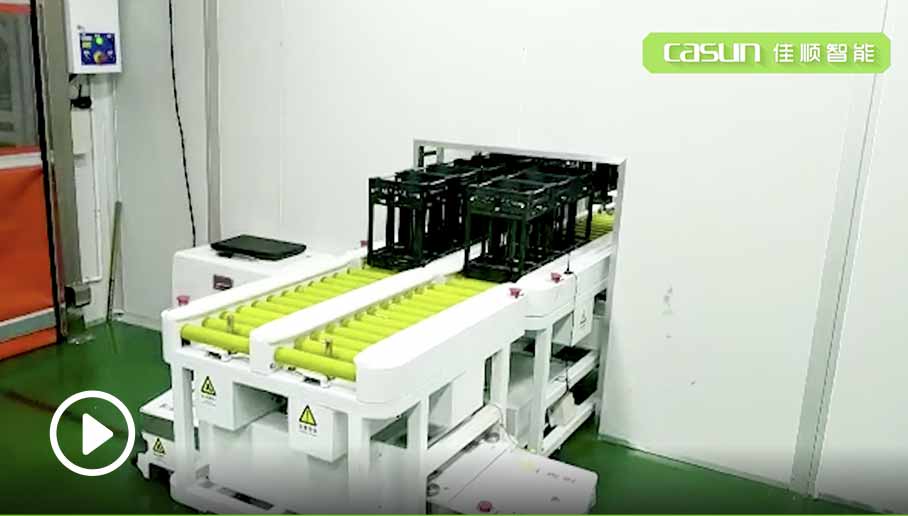 Focus on AGV industry for 18 years
Focus on AGV industry for 18 years
 Focus on AGV industry for 18 years
Focus on AGV industry for 18 years
In energy storage battery manufacturing, the processes from cells to modules and then to the PACK stage are critical steps in battery production. Intelligent logistics applications are gradually being promoted, driving the collaboration and integration of the supply chain. By enabling information sharing, collaborative planning, and resource integration, efficient supply chain operations and coordinated decision-making can be achieved, further improving logistics efficiency and response capabilities.
This project is an intelligent logistics solution for an energy storage enterprise, covering cell delivery, module off-line handling, and full PACK production line integration. CASUN Intelligent assists the customer in achieving functions such as enclosure prefabrication, automatic gluing, automatic module placement into enclosures, airtightness testing, automated material delivery, and product off-line transfer. Additionally, it addresses issues like cell movement and feeding on upstream module lines and automatic buffering of modules after line completion.

The production rhythm is rapid, and the transfer between processes is very tight. There are high requirements for the task coordination of mobile robots, which need to quickly keep up with the turnover rhythm to ensure production efficiency.
Materials have directional properties, and mobile robots need to determine the correct direction when entering and exiting workstations.
The on-site environment is relatively complex, with the presence of other mobile forklifts, logistics vehicles, and product accumulation occupying space, among other factors.

This project utilizes latent lifting mobile robots, unidirectional latent traction robots, bidirectional latent traction robots, stacker-type intelligent forklifts, automatic charging stations, the CRMS mobile robot intelligent control system, wireless docking systems, and photoelectric detection systems.
The PACK assembly line consists of a circular assembly line formed by latent traction mobile robots, with magnetic navigation. The mobile robots tow tooling carts to transport PACK boxes, and the tooling carts can be separated from the mobile robots for replacement. The automatic module line and PACK assembly line are completed by latent traction and latent lifting mobile robots for automatic delivery of raw materials and transfer of semi-finished and finished products. The module line uses latent lifting mobile robots to achieve automatic transfer of products from the production line to storage and inventory management.
The CRMS intelligent control system interacts with the WMS system to achieve efficient logistics management.


Lower fixed equipment investment costs, create flexible production lines, and enhance scheduling flexibility.

Improve yield rates and accuracy, reducing material damage during handling processes, with the non-conformance rate decreased by 90%.

Enhance transportation positioning accuracy, increasing transportation accuracy to 99%, meeting peak production demands across the entire line.

Achieve intelligent logistics within the facility, optimizing storage locations, paths, and task assignments, while fully digitizing the entire process.
